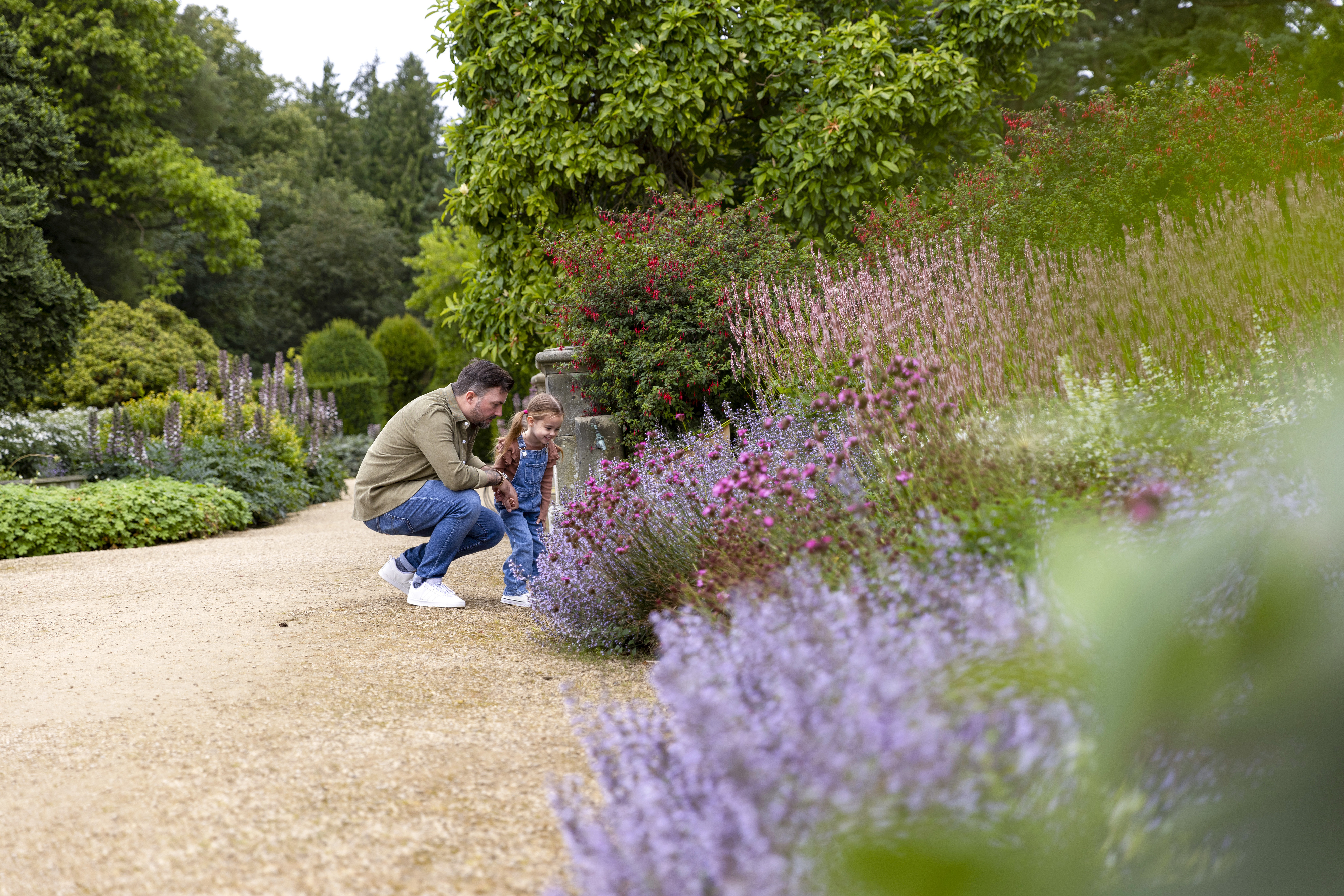A major two-year project of conservation and revival at Belsay Hall, Castle and Gardens in Northumberland is now complete, English Heritage announced today (23 August), as the charity revealed the results of major work to conserve Belsay’s Hall, Castle and Coach House, and rejuvenate the renowned historic gardens. Thanks to a grant of £3.4 million from The National Lottery Heritage Fund, support from Garfield Weston Foundation and The Foyle Foundation and other generous donations, there are also new family-friendly spaces and a children’s woodland play-and-learn area with an outdoor classroom and new interpretation across the site.
With its Grecian architecture, medieval castle and 30-acre Grade I-listed gardens, Belsay is a jewel in the North East, but in recent years, time had begun to take its toll. In the Hall, its unique architectural design caused leaks, while in the gardens much of the original planting material had been lost and the Hall woodland garden had become swamped by overgrown laurels and rhododendrons. Now, after a two-year conservation project, Belsay Hall’s original roof – which caused damp issues for over two hundred years – has been replaced, the castle’s medieval stonework has been repaired, and the gardens have been brought back to their glorious best by landscape designer and gardener Dan Pearson. As creative lead for the planting, Dan carefully planned a new scheme to revive the garden, restoring its individuality but maintaining its historic character. Working alongside Dan, the gardens team at Belsay have worked tirelessly to plant over 80,000 new plants, with 35,000 alone in the Hall’s Woodland, creating a beautiful burst of colour for visitors this summer and restoring previously lost historic views on Crag Wood’s scenic walk.
Mark Douglas, English Heritage’s Properties Curator, said: “The Belsay that visitors see today comprises three distinct but related elements: a medieval castle, a Greek-Revival country house, which superseded it as a family residence at the beginning of the 19th century, and a beautiful garden linking the two buildings. Designed by Sir Charles Monck (1779 -1867) after a two year-long honeymoon taking in the classical sites of Greece, Belsay is one of the earliest Greek revival houses in Britain. Although a remarkable architectural feat, having been designed according to Greek tradition in decimals, not feet and inches – and modelled on the still-standing Temple of Hephaestus in Athens – Belsay Hall’s concealed gutters proved, over the next two hundred years, to be its downfall; it appears that Monck hadn’t accounted for Northumberland’s harsh winters! It has been such a relief to finally banish the damp from the Hall and safeguard Belsay for future generations.”
John Watkins, English Heritage’s Head of Gardens and Landscapes, said: “Belsay Hall sits within an extensive Grade I picturesque landscape, with gardens both formal and wild leading visitors on a journey between the Hall and Castle. The stone used to build the hall was carefully quarried on site to form dramatic ravines, influenced by Sicilian quarries creating a sublime picturesque experience fashionable at the time. In the late 19th and early 20th century, the West Quarry was planted with newly imported exotic plants, many from Asia that continue to thrive in this extraordinary environment. With the help of international plantsman and designer Dan Pearson, we have rejuvenated the more formal gardens and Hall Woodland Garden. Dan’s plantsmanship and painterly eye have helped to bring out the individual character of the extensive garden areas which will provide beauty and interest throughout the year.”
Helen Featherstone, Director, England, North at The National Lottery Heritage Fund, said: “It is incredibly inspiring to see that our funding continues to support some of the country’s most unique heritage sites, of which Belsay Hall, Castle and Gardens, with its picturesque surroundings brimming with exotic plants, is a wonderful example. Thanks to National Lottery players, we’re delighted to see Belsay restored and to know that the future of this architectural gem in the North is secure. We’re sure that this fantastic conservation project will pave the way for many more visitors to enjoy discovering the heritage of the historic site.”
Elsewhere on site new interpretation, centring around ‘The Wildman’ – a medieval mythical figure which features on the coat of arms of the Middleton family who owned Belsay for over 700 years – will bring the stories of the castle back to life with a projected animation and soundscape on the ground floor, which will be more accessible thanks to a new ramp. This theme is continued in the woodlands where a new children’s play area has been installed, and The Coach House building has been restored and transformed into a welcoming new café with its own renewable energy and rainwater harvesting.
Belsay Awakes has been made possible thanks to National Lottery players and a grant of £3.4 million from The National Lottery Heritage Fund. English Heritage are also grateful to other supporters including Garfield Weston Foundation, The Foyle Foundation, Historic Houses Foundation, The Catherine Cookson Charitable Trust and other generous supporters.

